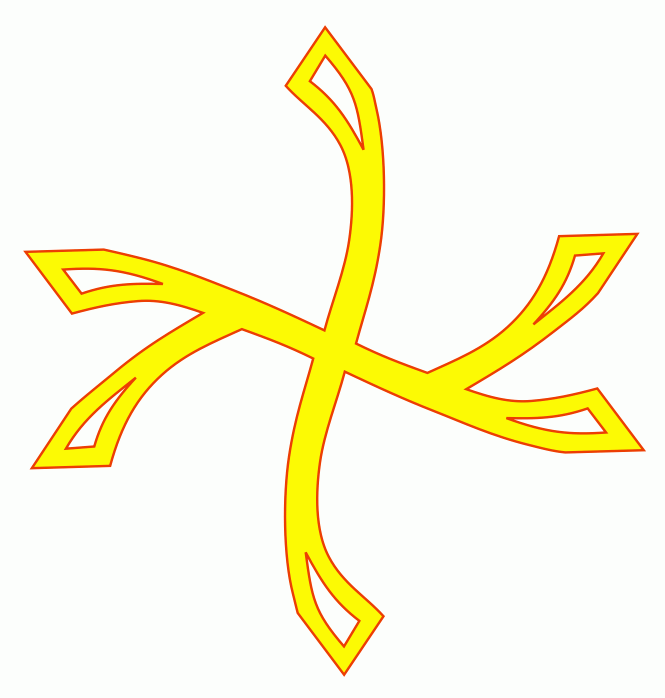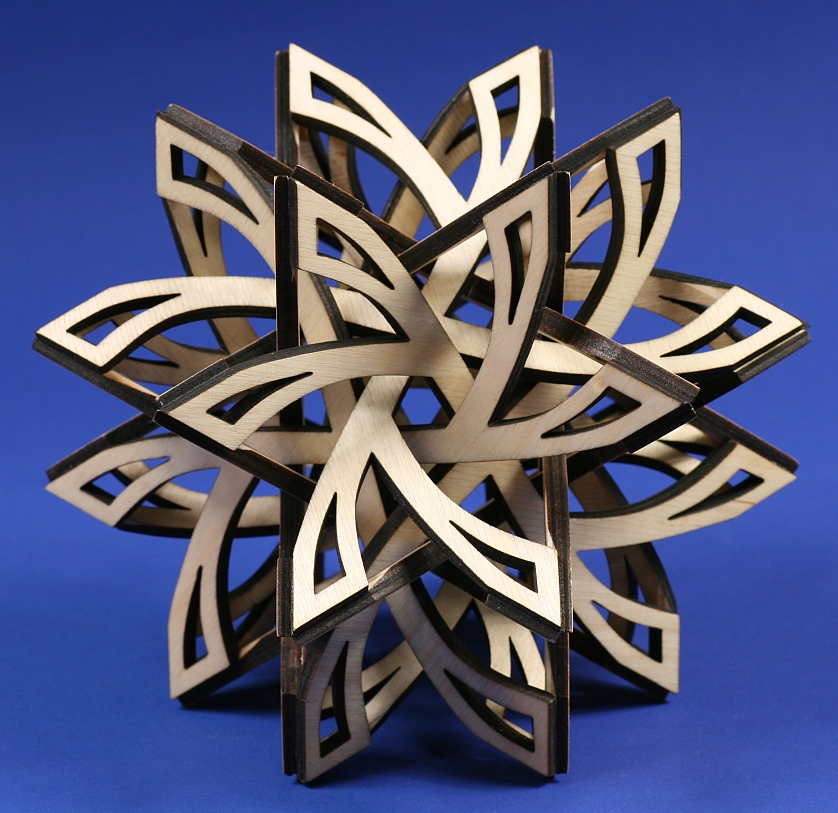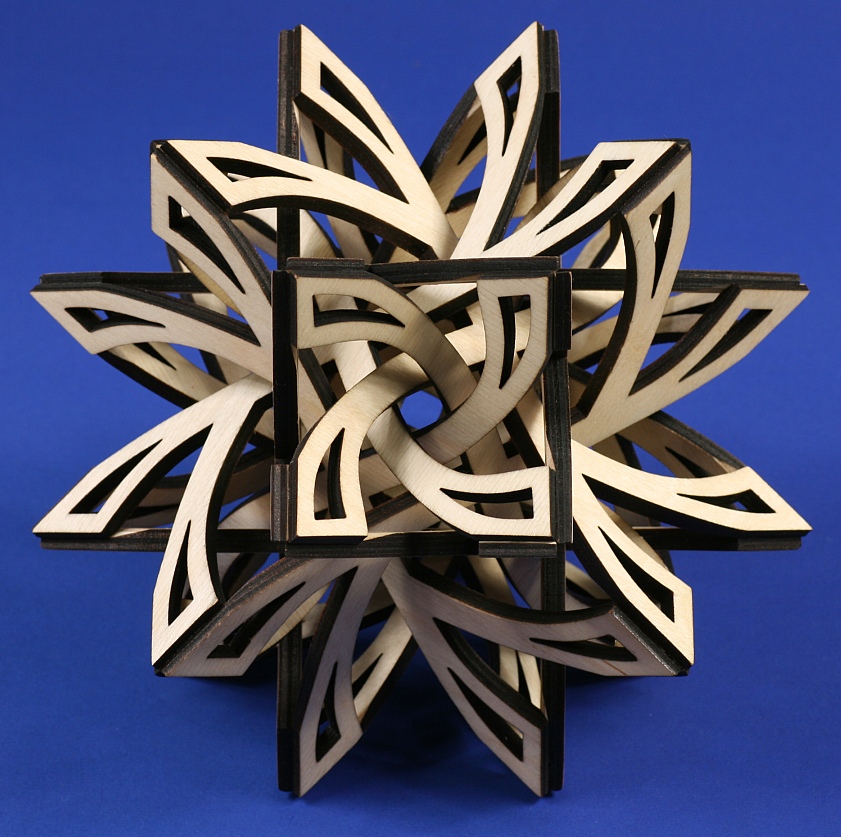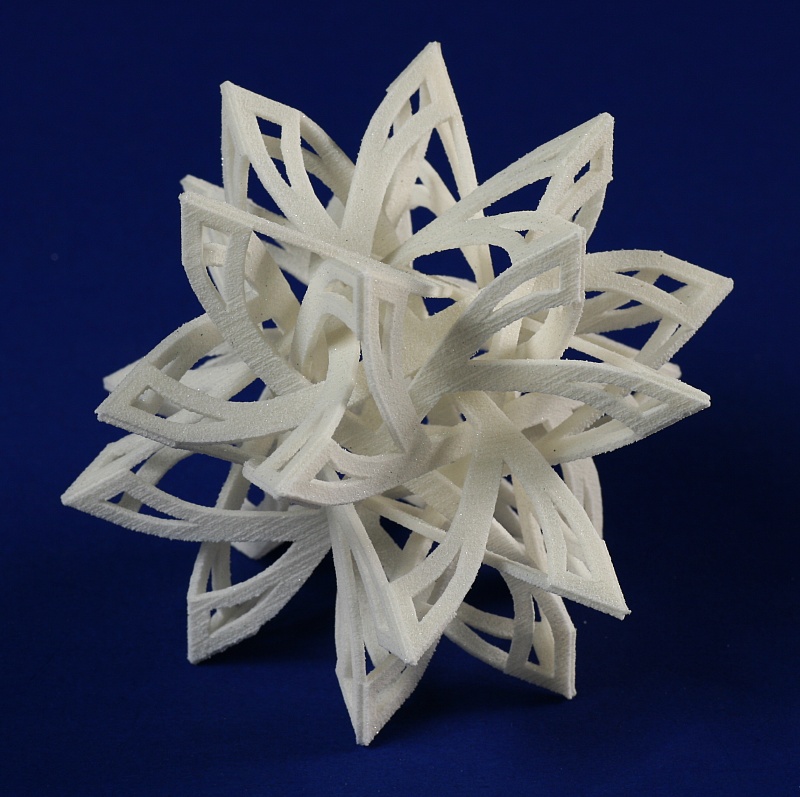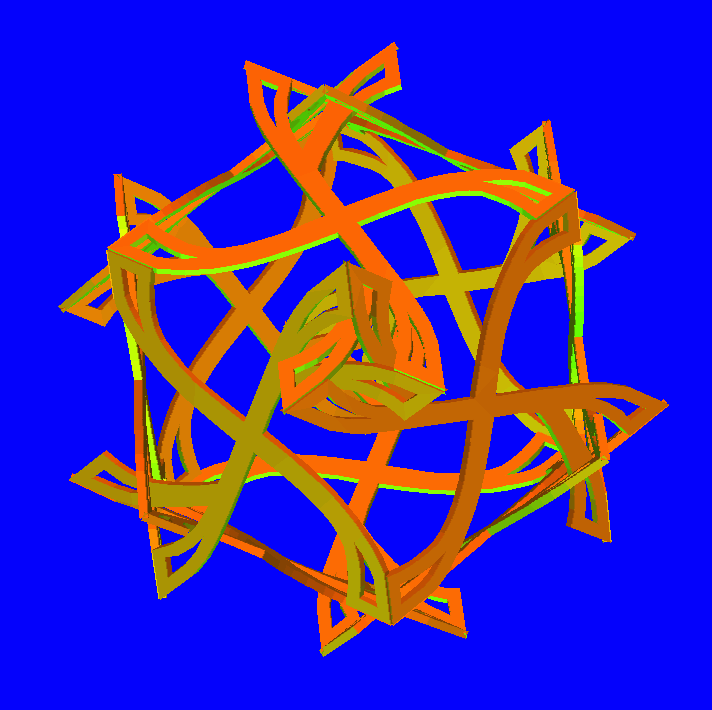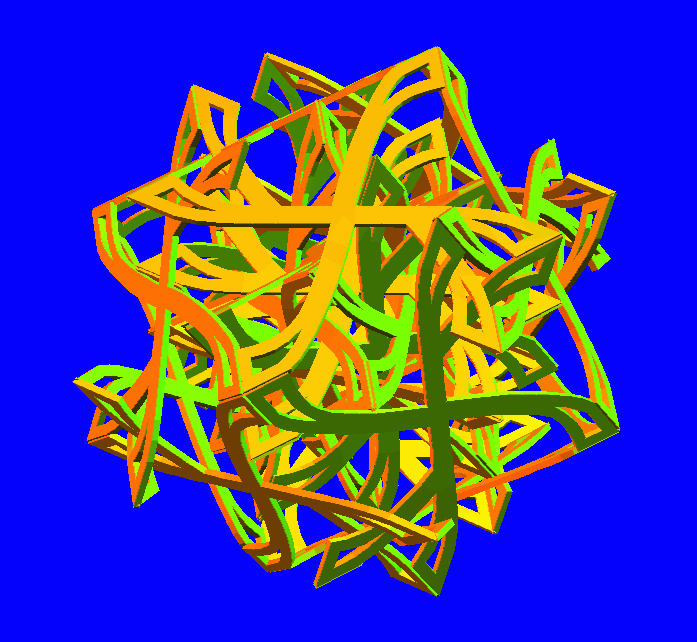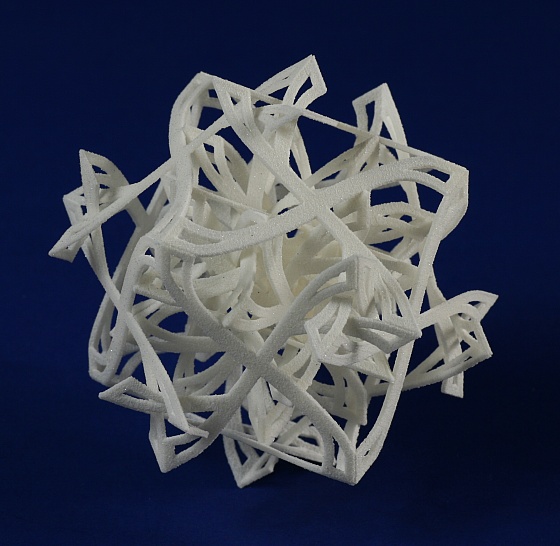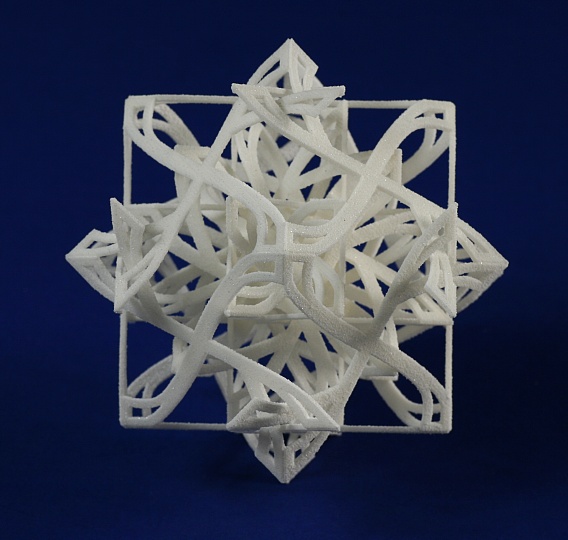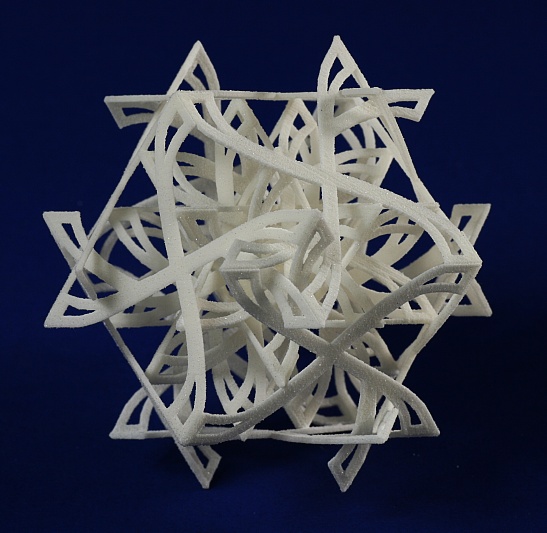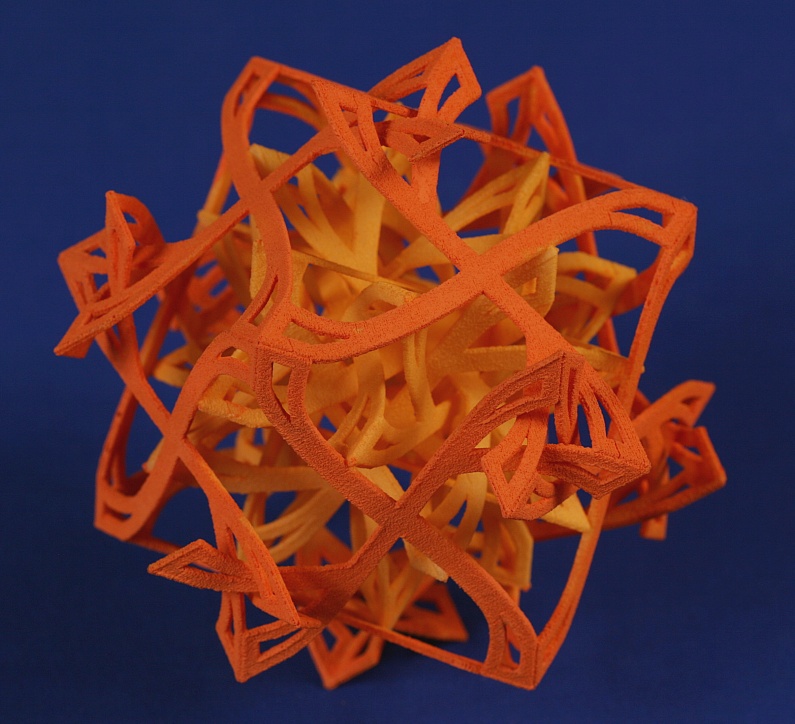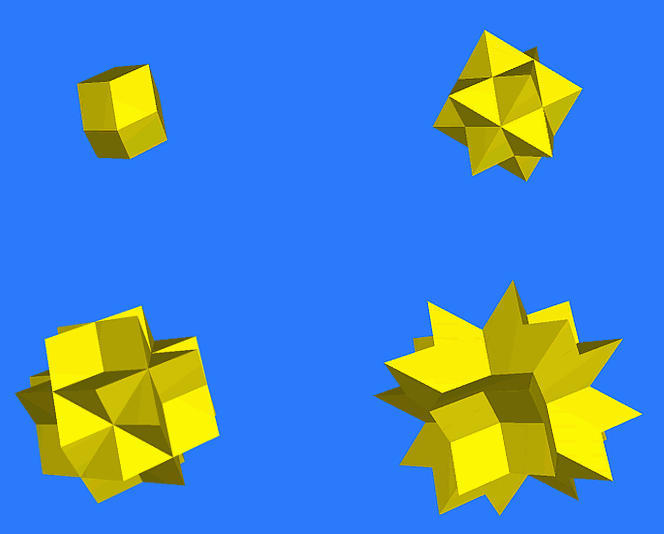
The design for
Dragonflies derives
from the third stellation of the rhombic dodecahedron (RD). The image
above shows the RD in the top left and its three (successively larger
and more complex) stellations. The RD consists of twelve rhombic
faces. The RD stellations are derived by extending the RD's face
planes symetrically until they meet and enclose a volume outside
the inner polyhedron. Much of each face plane is hidden inside the
outer shell; we only see certain facets of the faces in the stellations
above. These four forms have many interesting geometric properties,
e.g., the first two are space-fillers and they all have been used as
the basis of mechanical puzzle designs.
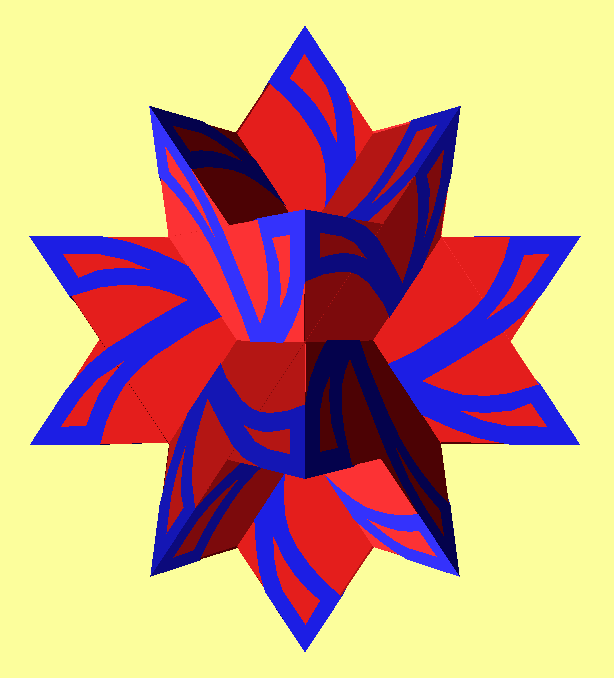
The wooden components of
Dragonflies
are designed as a subset of the complete face of the third
stellation of the RD. The image above shows how that subset lies within
the complete face plane. The subset was designed so that it does not
intersect with the other eleven copies of itself. Interweaving and
assembling the rigid physical parts is an interesting challenge.
Assemblages
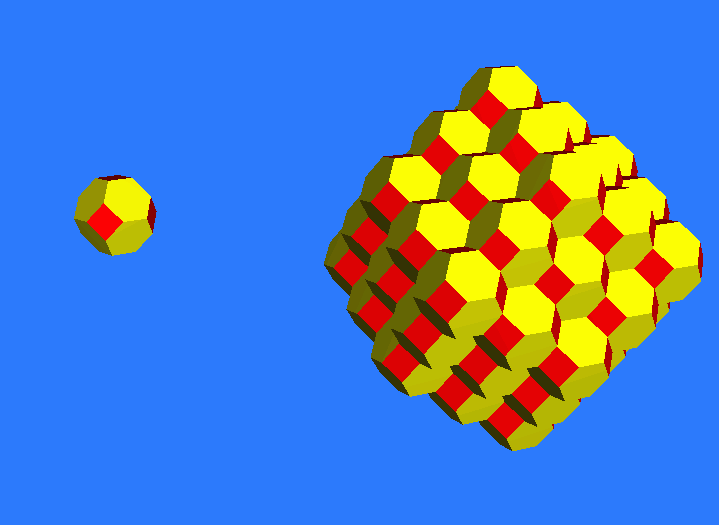
The convex hull of the third stellation of the RD is the truncated
octahedron, which is the Archimedean solid with two hexagons and one
square at each vertex, shown at left above. This is a
space-filling
polyhedron, which means it packs together with copies of itself to fill
space, as indicated at right above. So copies of the
Dragonflies sculpture can be
assembled together to form three-dimensional networks.
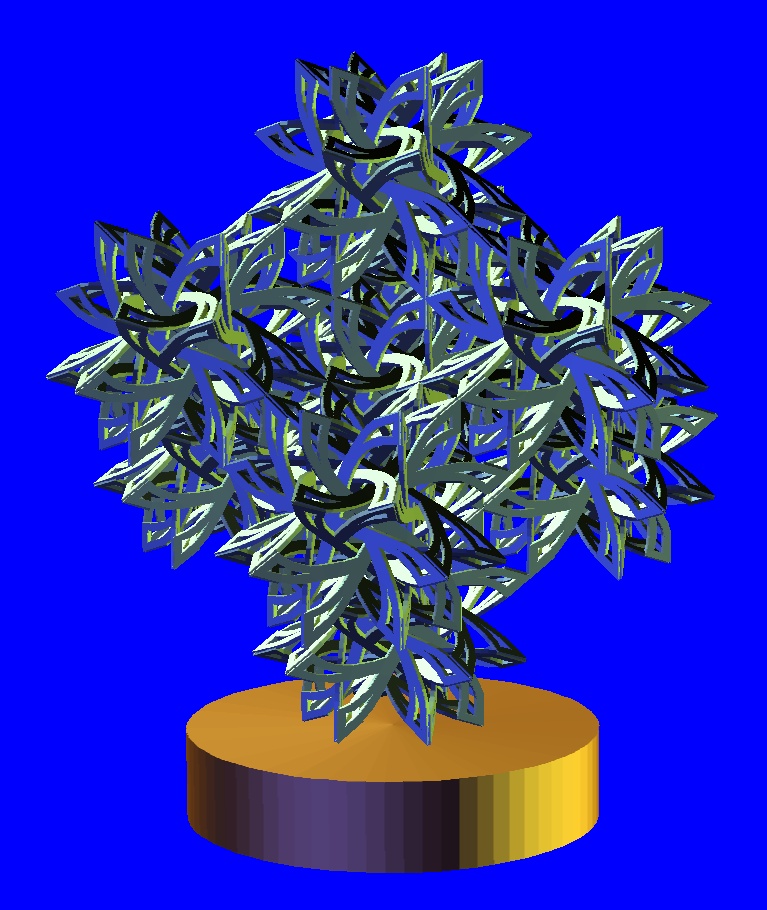
I have a number of designs in mind for possible large-scale sculptures
based on these concepts.
The above consists of nine units, outlining a cube standing on a
corner, totalling of 108 dragonflies.
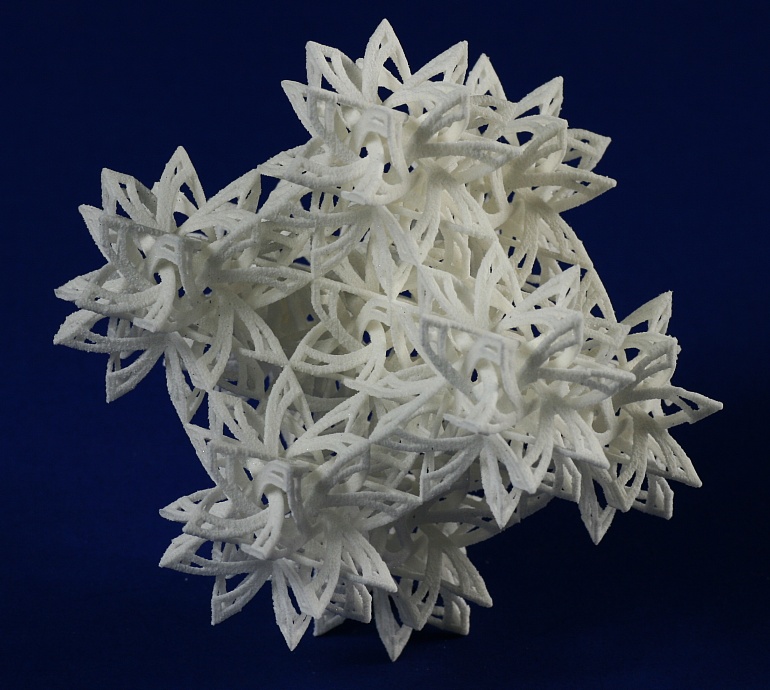
Here is a 3.5 inch nylon model of this design.
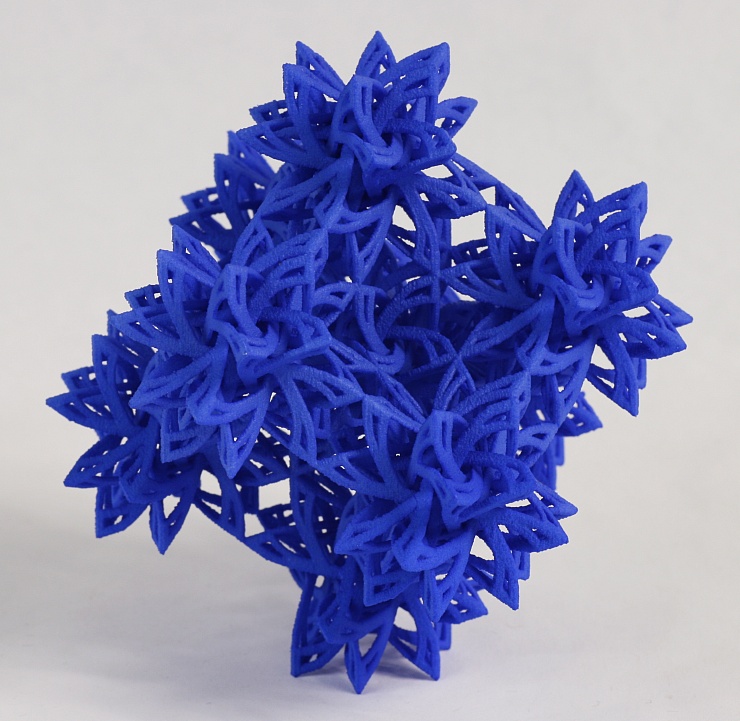
Here it is again, in blue.
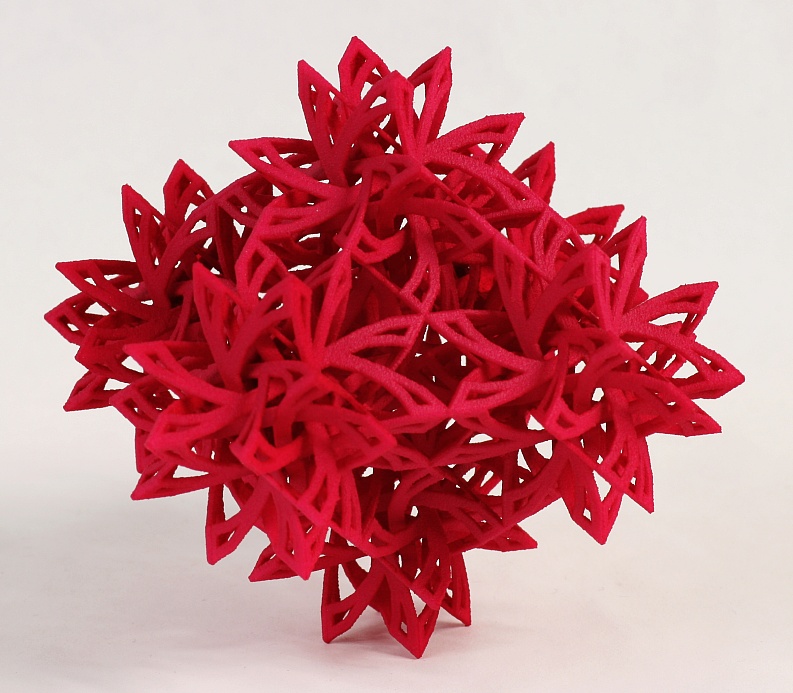
And here is a similar assemblage of just six units, totalling 72
dragonflies.
Second Configuration
